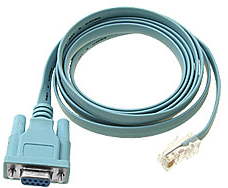yum -y install epel-release -y
yum -y --skip-broken install gcc vim-enhanced gcc-c++ libtool-libs libtool autoconf subversion zip unzip wget crontabs iptables file bison patch mlocate flex diffutils automake imake make cmake kernel-devel cpp zlib-devel \
libevent-devel libxml2-devel freetype-devel gd gd-devel libjpeg-devel libpng-devel ncurses-devel \
curl-devel readline-devel openssl-devel glibc-devel glib2-devel bzip2-devel e2fsprogs-devel libidn-devel gettext-devel expat-devel libcap-devel libtool-ltdl-devel pam-devel \
libxslt-devel libc-client-devel freetds-devel unixODBC-devel libXpm-devel krb5-devel libicu-devel icu sqlite-devel oniguruma-devel
cd /tmp
wget https://nih.at/libzip/libzip-1.2.0.tar.gz -O - | tar xz
cd libzip-*
./configure --prefix=/usr
make && make install
cp /usr/lib/libzip/include/zipconf.h /usr/local/include/zipconf.h
ldconfig
cd /tmp
wget -c http://us2.php.net/distributions/php-7.3.10.tar.gz -O - | tar xz
cd php-7.3*
./configure --with-config-file-path=/opt/php7/etc --with-config-file-scan-dir=/opt/php7/etc/php.d --prefix=/opt/php7/usr --enable-fpm --enable-bcmath --enable-exif --enable-ftp --enable-mbstring --enable-soap --enable-sockets --enable-zip --with-curl --with-freetype-dir=/usr --with-gettext --with-openssl --with-xmlrpc --with-png-dir --with-jpeg-dir --with-gd --with-libxml-dir=/usr --with-mhash --with-mysql-sock=/var/lib/mysql/mysql.sock --with-pdo-mysql=mysqlnd --with-mysqli=mysqlnd --with-imap --with-imap-ssl --with-kerberos --with-zlib --enable-intl=shared --enable-xml --disable-rpath --enable-shmop --enable-sysvsem --enable-mbregex --with-iconv-dir --enable-pcntl --enable-opcache --enable-exif --with-sqlite3 --with-pdo-sqlite --enable-calendar --enable-wddx --with-libdir=lib64 ;
make -j `grep name /proc/cpuinfo|wc -l`
make install
mkdir -p /opt/php7/etc/
cp php.ini-production /opt/php7/etc/php.ini
#cp ./sapi/fpm/php-fpm /etc/init.d/php-fpm
cp ./sapi/fpm/php-fpm.service /usr/lib/systemd/system/
sed -i 's#expose_php = On#expose_php = Off#' /opt/php7/etc/php.ini
sed -i 's/;date.timezone =/date.timezone = PRC/g' /opt/php7/etc/php.ini
sed -i 's/;cgi.fix_pathinfo=1/cgi.fix_pathinfo=0/g' /opt/php7/etc/php.ini
sed -i 's#enable_dl = Off#enable_dl = On#' /opt/php7/etc/php.ini
sed -i 's#short_open_tag = Off#short_open_tag = On#' /opt/php7/etc/php.ini
sed -i 's#output_buffering = Off#output_buffering = On#' /opt/php7/etc/php.ini
sed -i 's/memory_limit = 32M/memory_limit = 128M/g' /opt/php7/etc/php.ini
sed -i 's/post_max_size = 8M/post_max_size = 32M/g' /opt/php7/etc/php.ini
sed -i 's/upload_max_filesize = 2M/upload_max_filesize = 16M/g' /opt/php7/etc/php.ini
sed -i 's#allow_call_time_pass_reference = Off#allow_call_time_pass_reference = On#' /opt/php7/etc/php.ini
sed -i 's/disable_functions =/disable_functions="exec,system,passthru,shell_exec,escapeshellarg,escapeshellcmd,ini_alter,dl,popen,chown,chroot,chgrp,ini_restore,dbmopen,dbase_open"/g' /opt/php7/etc/php.ini
又是一年秋季,有些人手的手掌脱皮,指尖脱皮龟裂且裂口出外翻。
如果只是脱皮其实还好,也就手掌的掌纹变白皮肤犹如枯枝扎人,但是如果指尖脱皮又开裂,就生不如死没,一是痛二是指尖的触觉犹如覆盖了一层502胶水。
我的解决办法是在发现贴创口贴的地方皮肤明显更加湿润和热水泡胀手脚皮肤去角质层想到的,然后跑药店买了几幅医用手套,
在睡前洗涂抹新鲜的肉芦荟(用护手霜或甘油也可以)再戴手套睡觉,反复折腾几天后皮肤就恢复了正常机能。
如果情况严重的建议先去医院断诊。
阅读剩余部分...
早些年(新千年之前), 一群人下岗创业, 长三角和珠三角蒸蒸日上, 内陆的乡镇企业逐渐因为产业
升级开始没落, 内陆乡镇的人开始外出到沿海打工.
这些人的相同点, 没什么钱/背井离乡.
阅读剩余部分...
firewall-cmd --zone=public --add-port=3001/tcp --permanent
firewall-cmd --reload
sed -i 's/#Port 22/Port 3001/g' /etc/ssh/sshd_config
service sshd restart
最近几年的一些营销号和自媒体的视频和文章都特别+非常+特别非常喜欢带上“众所周知”。
一些特点 视频内容多数是东拼西凑出来的或者搬运过来重新配音并打上LOGO,
常用语 “众所周知” “小伙伴们怎么看?” “各位网友怎么看” “各位网友如何如何”
文稿内容只要能看到“众所周知”可以判断100%是自媒体营销号,然后通篇内容就是视频配音读稿的文案一字不改直接发出来,有时候看着看着都能自动脑补BGM。
还有一类更恶劣的,直接看图编内容,东拼西凑出来狗屁不通的洗稿见闻内容。
这拨人给人的感觉好像都是一个窝里面的, 和UC震惊部一样一样的,不知道啥时候才是头,这些想蟑螂的傻逼才会死翘翘进垃圾桶。
银行名/Bank Name : CMB Wing Lung Bank Hong Kong
银行编号/Bank Code : 020
SWIFT Code / BIC : WUBAHKHH
分行编号/Branch Code : 601
地址/Bank Address: WING LUNG BANK BUILDING, FLOOR 3, 45 DES VOEUX ROAD, CENTRAL
城市/City : HONG KONG
Shell大致流程
1.获取网络IP配置参数
2.写入自定义grub引导内核
2.1 http://103.xxx.xxx.xxx/kickstart.php/rh?end=1&ethworkaround=1是预设定的anaconda-ks自动响应安装脚本。
3.修改grub默认配置参数等待时间和指定引导顺序。
4. 重新生成grub2配置
5.重启等待安装完成。
最后建议在NoVNC或者IPMi辅助的情况下使用。
vmlinuz的网络参数还有一种写法是 ip=address::gateway:netmask:hostname:interface:method
getETH=`ip -4 route list 0/0 |awk '{ print $5 }'`
getGATEWAY=`ip -4 route list 0/0 |awk '{ print $3 }'`
getNETMASK=`ifconfig $getETH | awk '/mask /{ print $4;}'`
getIPADDR=`ifconfig $getETH | awk '/inet /{ print $2;}'`
cat>>/etc/grub.d/40_custom<<EOF
menuentry 'Netinstall' {
load_video
set gfxpayload=keep
insmod gzio
insmod part_gpt
insmod xfs
set root='hd0,gpt2'
linux16 /vmlinuz ro ks='http://103.xxx.xxx.xxx/kickstart.php/rh?end=1ðworkaround=1' net.ifnames=0 biosdevname=0 crashkernel=auto gateway=$getGATEWAY ip=$getIPADDR nameserver=8.8.8.8 ksdevice=$getETH netmask=$getNETMASK
initrd16 /initrd.img
}
EOF
sed -i 's/GRUB_TIMEOUT=5/GRUB_TIMEOUT=60/g' /etc/default/grub
sed -i 's/GRUB_DEFAULT=saved/GRUB_DEFAULT=Netinstall/g' /etc/default/grub
grub2-mkconfig --output=/boot/grub2/grub.cfg
reboot
Linux或者Mac OS生成一个key
ssh-keygen -t rsa
用scp上传到Mikrotik
scp -P端口 ~/.ssh/id_rsa.pub [email protected]:id_rsa.pub
在Mikrotik内导入key
[admin@MikroTik] > /user ssh-keys import public-key-file=id_rsa.pub user=admin
打印查看
[admin@MikroTik] > /user ssh-keys print
Flags: R - RSA, D - DSA
# USER BITS KEY-OWNER
0 R admin 2048 XXXXXXX
抓取主板第一个网卡mac地址
ipmitool raw 0x30 0x21 | tail -c 18 |sed 's/ /:/g'
抓取BMC网口mac地址
ipmitool raw 0x0c 0x02 0x01 0x05 0x00 0x00|tail -c18| sed 's/ /:/g'
or
ipmitool lan print | grep "MAC Address" |tail -c18
原文链接 :https://acidborg.wordpress.com/2010/12/30/how-to-connect-to-cisco-devices-via-serial-port-using-gnulinux/
原文标题:How To Connect To Cisco Devices Via Serial Port Using GNU/Linux
Filed under: Linux, SysAdmin — acidborg @ 10:17
Description: to connect your computer to a Cisco device via its console port, you usually need a RJ45 rolled cable. You can use a RJ-45 to DB-9 Female if your computer has a serial port.
RJ-45 to DB-9 Female

To communicate through the serial port with the Cisco device, you need Minicom, a terminal emulator software.
阅读剩余部分...
快速整理
#/user set 0 name=NEW-admin #将admin用户更名
/user set 0 password=密码
/user ssh-keys import public-key-file=id_rsa.pub user=admin
/ipv6 nd set [find] disabled=yes
/ip neighbor discovery-settings set discover-interface-list=none
/ip dns set servers=8.8.8.8
/ip ssh set strong-crypto=yes
/ip service disable telnet,ftp,api,api-ssl
/ip service
set www port=3000
set ssh port=3001
set api port=3003
set winbox port=3002
/ip firewall mangle add action=change-mss chain=postrouting new-mss=1420 passthrough=yes protocol=tcp tcp-flags=syn tcp-mss=!0-1420
#关闭ddns动态解析
/ip cloud set ddns-enabled=no update-time=no
/system clock set time-zone-name=Asia/Shanghai
/system identity set name=ROS-Name
#关闭ppp系列
/interface l2tp-server server set enabled=no
/interface pptp-server server set enabled=no
/interface sstp-server server set enabled=no
/interface ovpn-server server set enabled=no
修改用户密码
[admin@MikroTik]>/user #进入操作路径
[admin@MikroTik]/user>print #显示RouterOS用户
[admin@MikroTik]/user>set admin password=123456 #修改admin用户密码为123456
[admin@MikroTik] /user> / #返回根目录
在当前用户下修改密码
[admin@MikroTik]>password #修改本目录用户密码备份命令
阅读剩余部分...
wget http://download2.mikrotik.com/routeros/6.43.8/chr-6.43.8.img.zip -O chr.img.zip && \
gunzip -c chr.img.zip > chr.img && \
mount -o loop,offset=33554944 chr.img /mnt && \
ADDRESS0=`ip addr show eth0 | grep global | cut -d' ' -f 6 | head -n 1` && \
GATEWAY0=`ip route list | grep default | cut -d' ' -f 3` && \
echo "/ip address add address=$ADDRESS0 interface=[/interface ethernet find where name=ether1]
/ip route add gateway=$GATEWAY0
" > /mnt/rw/autorun.scr && \
umount /mnt && \
echo u > /proc/sysrq-trigger && \
dd if=chr.img bs=1024 of=/dev/vda && \
reboot
https://download.mikrotik.com/routeros/7.1beta2/chr-7.1beta2.img.zip
修改/etc/default/grub
GRUB_CMDLINE_LINUX="rd.lvm.lv=centos/swap vconsole.font=latarcyrheb-sun16 rd.lvm.lv=centos/root crashkernel=auto vconsole.keymap=us rhgb quiet"
GRUB_CMDLINE_LINUX="rd.lvm.lv=centos/swap vconsole.font=latarcyrheb-sun16 rd.lvm.lv=centos/root crashkernel=auto enforcing=0 vconsole.keymap=us rhgb quiet"
添加 enforcing=0 或者net.ifnames=0 biosdevname=0
GRUB_DISABLE_LINUX_UUID=true
存盘退出
echo "GRUB_DISABLE_LINUX_UUID=true" >> /etc/default/grub
sed -i 's#GRUB_CMDLINE_LINUX="#GRUB_CMDLINE_LINUX="net.ifnames=0 biosdevname=0 #g' /etc/default/grub
grub2-mkconfig --output /boot/grub2/grub.cfg
背景
Mac系统语言设置的是英文,安装的Office语言默认也是英文。由于习惯了中文Office的使用,想把Office的语言设置成中文,
方法之一就是直接修改系统的默认语言设置,但并不希望直接修改系统语言,仅想修改Office软件的默认语言
实现
1获取App的Bundle Identifier
Bundle Identifier是应用软件的标识,以Microsoft Word为例,Terminal中输入命令:
mdls -name kMDItemCFBundleIdentifier /Applications/Microsoft\ Word.app
2得到结果:
kMDItemCFBundleIdentifier = "com.microsoft.Word"
3修改应用程序默认语言
该操作需要用到第一步查到的应用程序Bundle Identifier,本例中是com.microsoft.Word,Terminal中输入命令:
defaults write com.microsoft.Word AppleLanguages '("zh_CN")'
阅读剩余部分...
slmgr /ipk [密钥]
https://moeclub.org/2018/12/02/710/
slmgr /skms kms.moeclub.org
slmgr /ato
slmgr /xpr
https://www.moerats.com/kms/
slmgr /skms kms.lolico.moe
slmgr /ato
slmgr /xpr
主页https://03k.org/kms.html
slmgr /skms kms.03k.org && slmgr /ato
主页https://v0v.bid/
slmgr /skms kms.v0v.bid && slmgr /ato
slmgr /skms k01.v0v.bid && slmgr /ato
slmgr /skms k02.v0v.bid && slmgr /ato
slmgr /skms k03.v0v.bid && slmgr /ato
slmgr /skms k04.v0v.bid && slmgr /ato
slmgr /skms k05.v0v.bid && slmgr /ato
slmgr /skms k06.v0v.bid && slmgr /ato
slmgr /skms k07.v0v.bid && slmgr /ato
slmgr /skms k08.v0v.bid && slmgr /ato
slmgr /skms k09.v0v.bid && slmgr /ato
slmgr /skms k10.v0v.bid && slmgr /ato
slmgr /skms k11.v0v.bid && slmgr /ato
slmgr /skms k12.v0v.bid && slmgr /ato
slmgr /skms k13.v0v.bid && slmgr /ato
- «
- 1
- ...
- 19
- 20
- 21
- 22
- 23
- 24
- 25
- ...
- 67
- »






